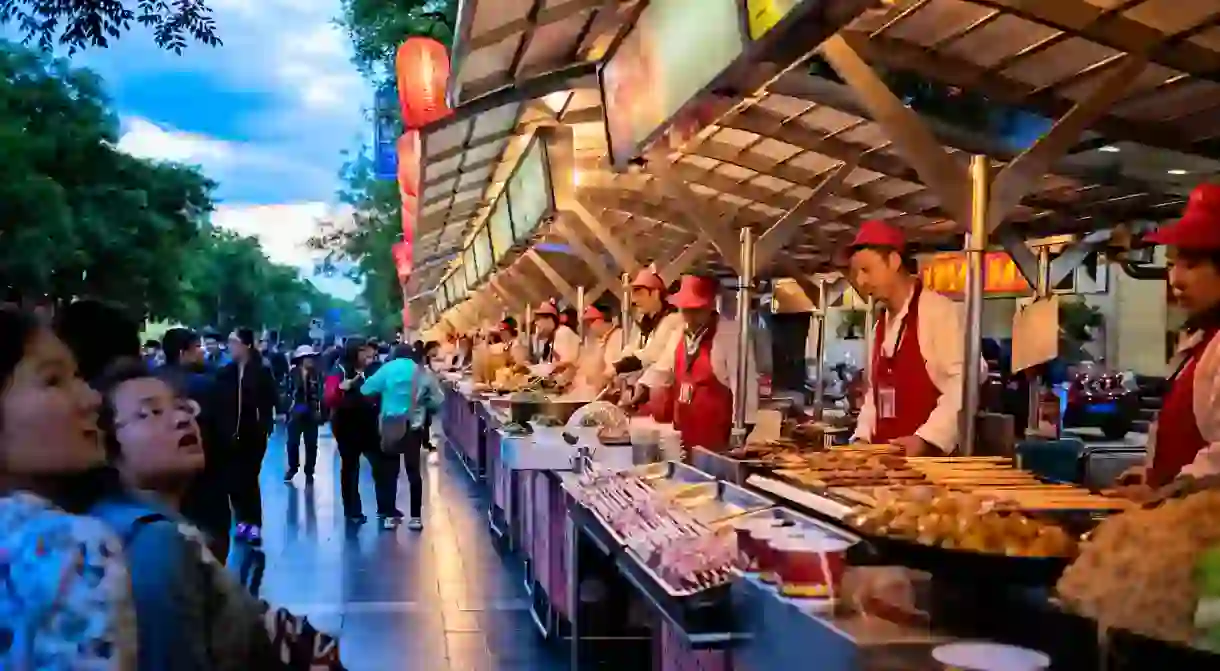The Best Things To Do on a Budget in Beijing

China’s economic boom means that Beijing isn’t the bargain it once was, but there’s still plenty of value in the Chinese capital if you know where to look.
Although prices in Beijing haven’t quite reached Paris or London levels, the cost of visiting China’s capital has kept pace with the country’s economic explosion over recent years. Budget travellers can still find a long list of affordable things to see and do in Beijing, though, such as these following experiences.
Experience Tiananmen Square
Park, Building

Sitting smack bang in the centre of the Chinese capital, Tiananmen Square is one of Beijing’s biggest attractions. The massive plaza is 880 metres (2,887 feet) long and 500m (1,640ft) wide – roughly the size of 60 football fields – and is completely free to enter. Tiananmen is often busy – large crowds congregate for the raising and lowering of the national flag at dawn and dusk – which makes it perfect for people-watching, while landmarks like the Gate of Heavenly Peace, the Mausoleum of Mao Zedong and the National Museum of China border the square.
Visit the National Museum of China
Art Gallery, Building, Museum

Try something new at Wangfujing Snack Street
Market, Chinese

The Wangfujing Snack Street is touristy, but it’s a great spot to try something new at budget-friendly prices. Here, travellers will find unique items on the menu, including scorpions on a stick, silkworms, rabbit heads, donkey meat, boiled tripe, wasp larvae, lamb spine and the fermented ‘stinky tofu’, to name a few. The stalls at Donghuamen Night Market near the Forbidden City offer similar snacks, as well as food more familiar to Western visitors.
Walk around Beijing Olympic Park
Stadium, Park

The legacy of Beijing’s 2008 Olympic Games is controversial – many venues have been abandoned and lie crumbling around the city – but the two centrepiece stadiums are still glistening. The Bird’s Nest and the Water Cube are two architectural marvels that symbolise the spectacular 2008 Games, and the two space-age arenas will feature in the 2022 Winter Olympics as well. Situated on the northern outskirts of the capital and well connected via their own dedicated subway stops, the Olympic precinct can feel like a bit of a ghost town, but it’s a must-see sight for sports fans on a tight budget.
Relax in Ritan Park
Park

You could spend hours wandering through this huge park in East Beijing, admiring the ornate Temple of the Sun and the quaint pavilions surrounding it, strolling through the dazzling gardens, and watching the locals perform tai chi and play games of mahjong. Popular picnic spot Chaoyang Park, the 1,000-year-old Beihai Park and Jingshan Park, which overlooks the Forbidden City, are other free green spaces where you can grab a breath of fresh air in this smoggy city.
Stroll through historic hutongs
Architectural Landmark

Snap photos of the street art in the 798 Art District
Art Gallery, Building, Museum, Store

Another scenic corner of the capital that’s free to explore, the 798 Art District – also known as Dashanzi – began life as a military factory complex in the 1950s. However, when the soldiers moved out in the 1990s, contemporary artists moved in, transforming this complex of Bauhaus-style warehouses into one of Beijing’s hottest cultural destinations. There are dozens of galleries to visit, but the murals and sculptures you’ll spot on the street are every bit as eye-catching.
Wander around Shichahai
Park

OK, you’d have to be pretty brave to join the crew of intrepid swimmers who throw themselves into this urban lake, especially when the weather cools down. But a simple stroll around the scenic waterfront is a free experience that everyone can enjoy. Houhai Lake sits within the Shichahai area stretching down the Forbidden City, with bars, shops, restaurants and old-school hutongs surrounding the area.
Find inner peace at Zizhuyuan Park
Park

Zizhuyuan Park is one of the most peaceful and beautiful natural spaces in Beijing. Also known as the Purple Bamboo Garden, this area used to be a marsh until the Mongolian Yuan Dynasty, when the emperor enlisted the help of a mathematician to excavate a channel for the Tonghui River to flow through the park. Then, in the Ming Dynasty, a temple was built on the north coast of the lake – it wasn’t until the relatively recent Qing Dynasty that a statue of the Buddhist bodhisattva Avalokiteshvara was enshrined within the temple. The park is particularly atmospheric on foggy days and looks like the set of Ang Lee’s 2000 film Crouching Tiger, Hidden Dragon.
Haggle for souvenirs at Panjiayuan Antique Market
Market, Shop

This is an updated version of an article originally created by Fran Lu.













